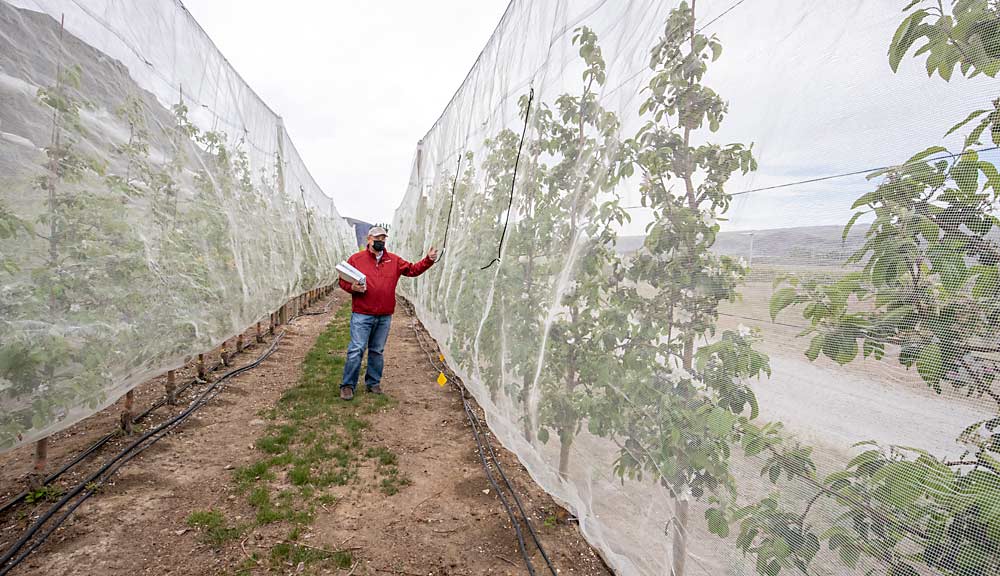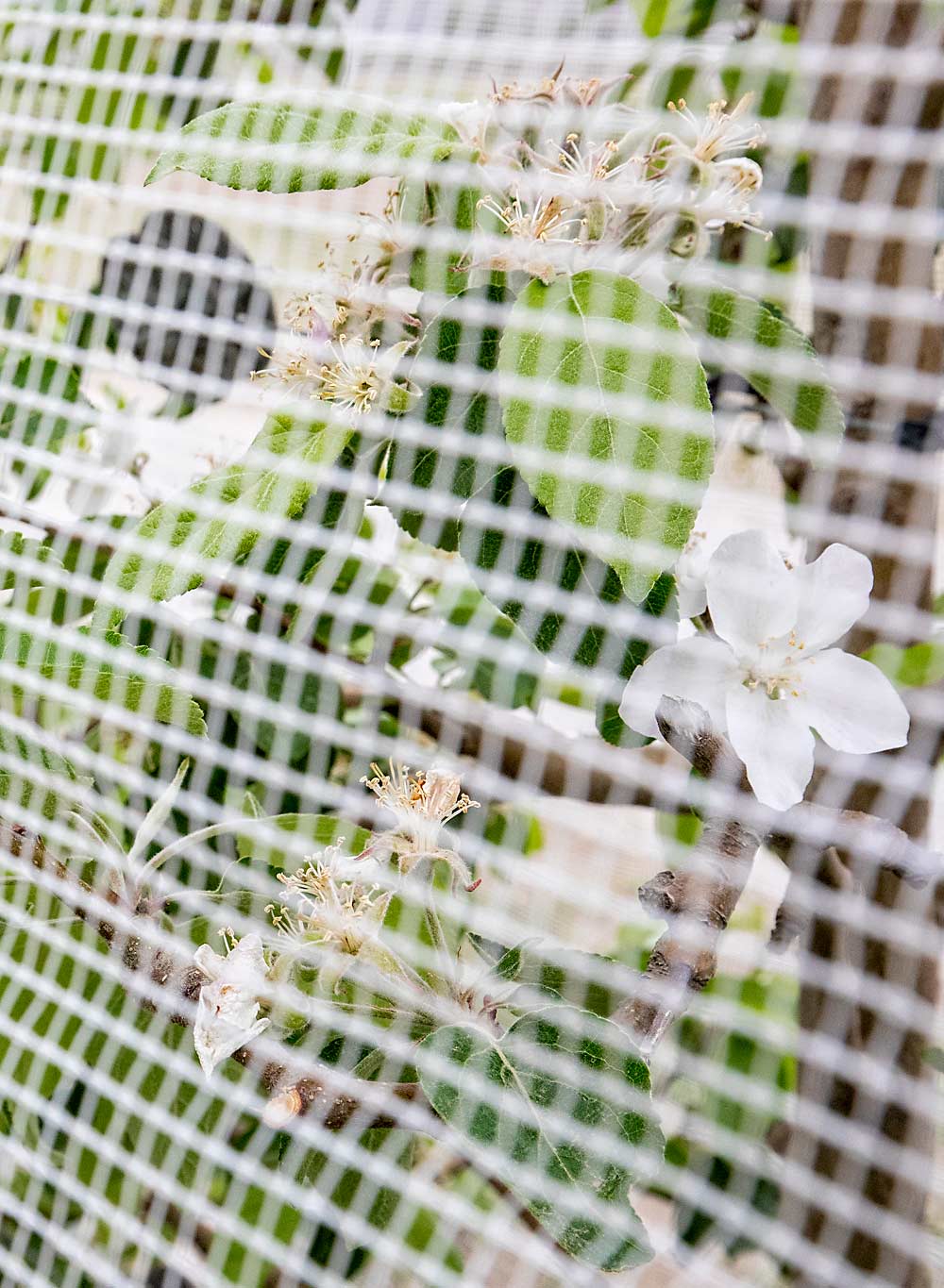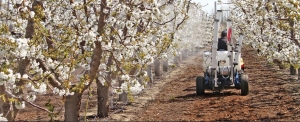
If you already have nets in your orchard to protect against hail, insects, sunburn or other threats, you could use them to manage crop load, too, but research is finding pros and cons to the approach.
According to trials conducted by Michigan State University tree fruit physiologist Todd Einhorn, nets can reduce fruit set by excluding pollinators. If you drop the nets during early bloom and prevent pollinators from continuing their work, the resulting reduced fruit set might eliminate the need for later hand or chemical thinning, he said.
Einhorn and other researchers have been studying pollinator exclusion netting in Michigan and Washington state for the past few years. The technique reduces crop load for multiple varieties, but nets are expensive, and growers have discovered they have other drawbacks. Einhorn said he hasn’t yet “penciled out” the economics of their use, and he plans to collect and analyze data for another year before he makes specific recommendations.
He thinks pollinator exclusion has great potential for organic apple production. Combined with a scab-resistant variety, the technique could make organic apples a viable option in Michigan and other places that aren’t conducive to organic growing with existing tools such as blossom thinning with lime sulfur and oil, he said.
According to the trials, netting treatments significantly reduced fruit set, fruit number and seed content (an indication of pollination) when applied to Honeycrisp, Minneiska (marketed as SweeTango) and Fuji. Gala fruit set and yield did not differ among treatments. Exclusion of pollinators from Gala during a frost year led to a high percentage of parthenocarpic (unfertilized) fruit set, indicating Gala’s capacity to set fruit under adverse conditions, according to a summary of the research.

MSU researcher Mokhles Elsysy, who worked on the trials with Einhorn, said Honeycrisp in Washington responded “perfectly” to the netting treatments. The earlier they put the nets down, the lower its fruit set and crop load. The later they put the nets down, the higher its fruit set and crop load. Minneiska and Fuji also had a strong relationship to the treatments, he said.
Netting trials on Gala, Honeycrisp and Fuji were conducted at grower Phil Schwallier’s orchard on the Fruit Ridge near Grand Rapids, Michigan, from 2017 through 2020. The nets definitely reduced crop load and the need for thinning, but he doesn’t think the technique is well-suited for his area. There’s already too much risk of frost reducing the crop during or after bloom. Excluding pollinators on top of that might be overkill.
“I would not do this as a means of reducing crop load,” Schwallier said. “Our crop is not dependable enough. We have to try to set the best crop we can every year.”
He said pollinator exclusion would probably work better in frost-free regions, or it might be a viable alternative if growers ever lose access to chemical thinners.
Schwallier also had difficulties with woolly apple aphid under the nets. He said the aphids probably got in through gaps between the nets and the tree trunks. The pest wasn’t too bad during the first two years of the trial, but by the third year it became a serious problem. Schwallier applied insecticide with an airblast sprayer, but it didn’t affect the aphids much. The nets might have obstructed spray penetration, he said.
In Washington state, using nets to control crop load is not a widespread practice, but it does have potential in organic orchards, said Washington State University professor Stefano Musacchi.
Musacchi conducted exclusion netting trials at an organic orchard in Quincy. He said they closed the nets when there were 100 to 120 king flowers open per tree at the beginning of bloom.
On Honeycrisp, that timing gave them the right crop load without any need for chemical thinning, said farm manager Dale Goldy.
There’s no doubt the nets reduce crop load, Goldy said. But he needs more information before he’s willing to scale up the technique. If he just used nets for bee exclusion, he would only need them up for 10 days or so, which probably wouldn’t be worth the cost and effort. But keeping them up long-term to protect from other threats has uncertain effects on tree growth, especially in a changing climate, he said.
Einhorn’s team is also trying to answer more fundamental questions about the relationship between seed content and fruit quality, as conventional wisdom holds that pollination and, therefore, seed set improves fruit quality. Initial trial results didn’t show a strong relationship between seed number and fruit weight and shape, implying the relationship is not as strong as the scientific literature suggests, Elsysy said.
Elsysy said the researchers were surprised to find seeds in fruit where they had completely excluded bees, which implied self-fertilization. They’re investigating how pollen travels to fruit even when there are no bees in the trees. It’s possible wind might be carrying the pollen, or the nets are somehow facilitating self-compatibility, he said.
—by Matt Milkovich







Leave A Comment